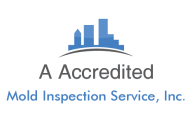 COMMON MOLD GROWTH PROBLEMS IN RESTAURANTS
COMMON MOLD GROWTH PROBLEMS IN RESTAURANTS
Prior to performing mold inspections for A Accredited Mold Inspection Service I was a home inspector. Prior to being a home inspector, I was a Palm Beach County health inspector. I am all too aware of how common mold problems are in restaurant kitchens, and thus, how important mold inspections in restaurants are.
Mold and water problems in restaurant kitchens are a frequent problem. Because mold and water damage are so common in restaurants, and because of a modern heightened awareness of the dangers of mold, professional mold testing in restaurants is becoming more common. If you are looking for information on mold in food click here. If you are a restaurant manager or owner and think you have a mold problem that needs to be addressed then continue reading.
PLUMBING FIXTURES
Pipes, sinks, appliances, and other plumbing fixtures that utilize water on a daily basis are everywhere in commercial kitchens. In addition, the hectic act of preparing food and running a busy kitchen often results in leaks going unnoticed. In commercial kitchens, leaks and mold around plumbing fixtures often go unnoticed for extended periods of time.
It is quite easy for water to accumulate under three compartment sinks, and around dishwashers. The water from plumbing leaks around kitchen sinks, mop sinks, dishwashers, and bathrooms, travels hidden inside walls, and under floor tile.
To make matters worse, kitchens are often more humid and warm than other rooms in a commercial building. When water accumulates in such areas it does not dry quickly because of the humid conditions. Such conditions will always eventually result in mold growth.
CONDENSATION
Severe mold problems inside walls that abuts poorly insulated walk in freezers and walk in refrigerators is a common problem.
The reason for mold in poorly insulated walls around walk-in storage refrigerators and freezers is condensation. The cold storage rooms often cools the interior of the abutting walls. Cold walls cause large amounts of condensation, and this in turn causes mold in the nearby walls. Often the mold will be Cladosporium mold because Cladosporium loves growing in areas where small amounts of condensation forms on inorganic surfaces. However, because of the excessive amounts of moisture associated with this specific type of condensation problem, and because of the presence of organic building materials such as drywall paper in such walls, Stachybotrys often grows in such walls.
HUMIDITY AND AC MOLD
Another common location for mold in restaurants and other food establishments is inside AC units and ducts. Odors coming out of ducts is a sure sign of mold growth in the system. Why does this happen? Often restaurant doors are constantly being opened and closed as restaurant patrons enter and leave. Food delivery persons may prop doors open for deliveries. This constant opening of doors allows humid outdoor air in. Of course, cooking is a very major contributor to humidity levels in restaurants. Almost constant dishwashing and regular mopping also contribute. All this humidity is pulled into the AC and can and will eventually cause AC mold problems. Smelly AC duct mold can cause complaints and health problems.
Offering Mold Inspections in Restaurants
This information is provided by A Accredited Mold Inspection Service. If you own a restaurant in the South East Florida area, and are concerned about the possibility of mold in the building feel free to contact us. We provide mold inspections in restaurants, offices, homes, townhomes, and condos from Vero Beach to the Fl Keys.


